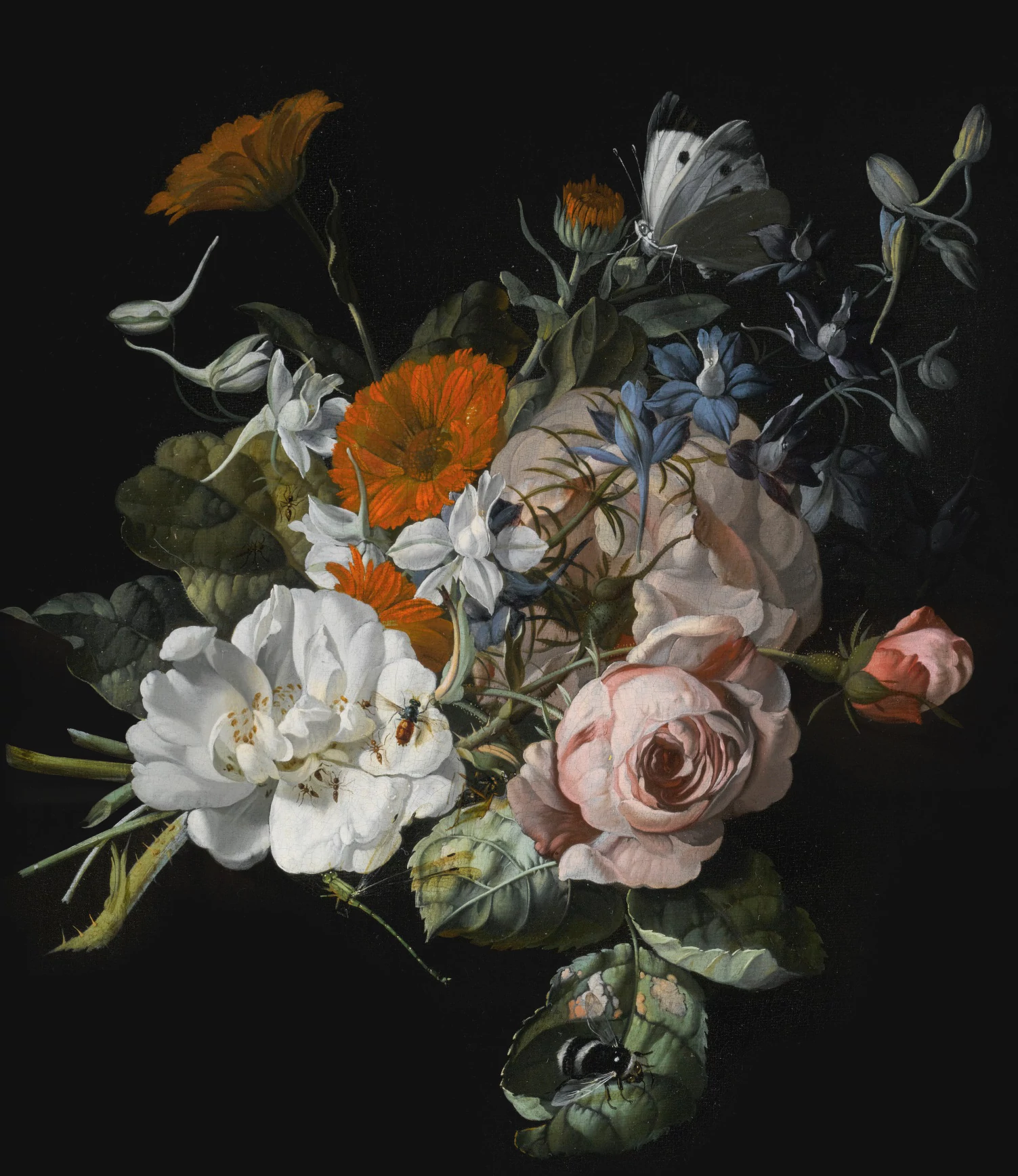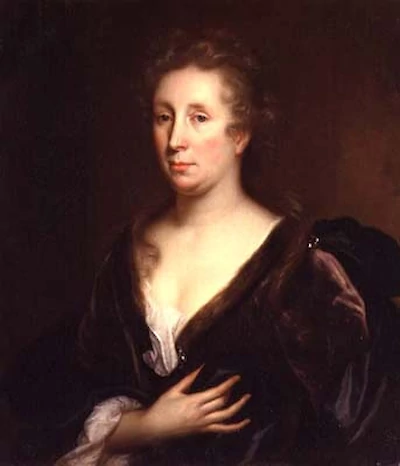Rachel Ruysch
Paint flowers, make money




Rachel Ruysch grew up in a house full of flowers and animal skeletons. Her father Frederik was a professor of anatomy and botany, and his collection of samples and skeletons became Rachel’s first subjects. Her early paintings were of insects and intricately detailed flowers.
There is something to be said for being in the right place at the right time. In the late 1600s the world was obsessed with flowers, and the Netherlands was the largest hub of the international horticultural trade. The market for Dutch tulips spread from the Netherlands all the way to Turkey, where they were prized for their beauty and intense color. Though the market for slow-growing and exotic tulip bulbs radically fluctuated, and eventually ballooned and crashed in 1636, the floral obsession spread to paintings.
Exquisitely rendered still life paintings were an extraordinarily popular genre in the Netherlands, from the skulls and candles of the famed vanitas paintings, to the strange preoccupation with dead animals in the animalier paintings. But the floral arrangement was the king of the still life. At 15, Rachel Ruysch apprenticed with the Amsterdam flower painter Willem van Aelst, and by 18 she was selling work independently.
Ruysch’s flow paintings became known for their intensely realistic detail and preternaturally dramatic arrangements, and her popularity skyrocketed. Rachel moved to The Hague and became the first female member of the Confrerie Pictura, an elite guild of academic artists. Ruysch married the portrait painter Juriaen Pool in 1693, had ten children over next decades, and never slowed her artistic output. In 1708, Ruysch became a court painter to Johann Wilhelm, the Elector Palatine and over the next six years, sold the most highly-valued flower paintings in the Netherlands, often receiving three-times the commission of her fellow still-life artists.
Today Rachel Ruysch is considered one of the most talented still life artists in history—a life of focus and dedication to a simple concept infinitely complex in execution. We like to remember her as the badass who took flowers all the way to the top.
...
Got questions, comments or corrections about Rachel Ruysch? Join the conversation in our Discord, and if you enjoy content like this, consider becoming a member for exclusive essays, downloadables, and discounts in the Obelisk Store.